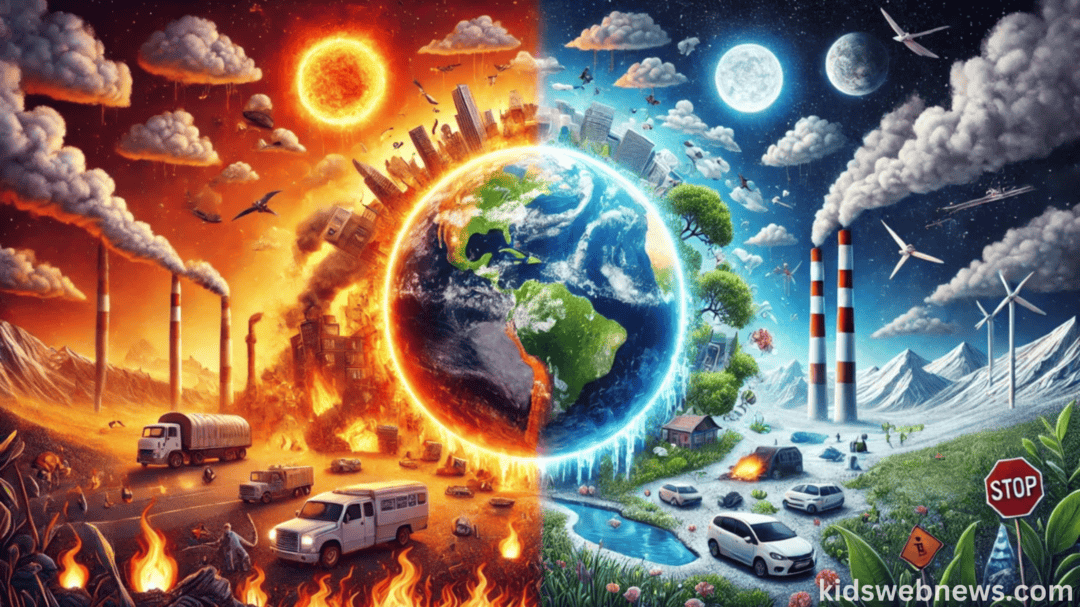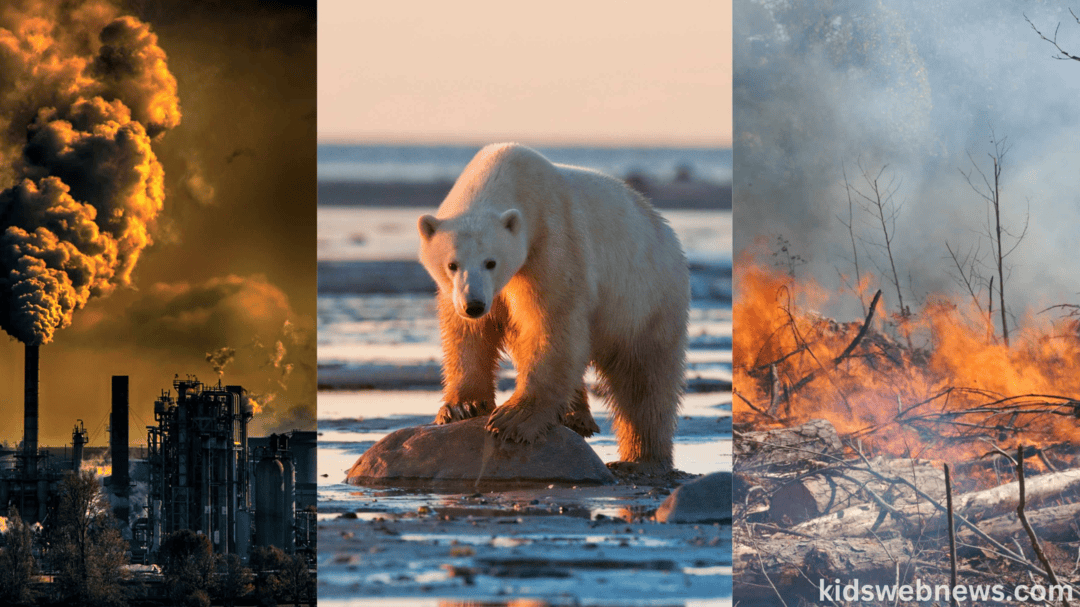Global warming’s influence on polar regions is profound and undeniable. These pristine landscapes, home to unique ecosystems and vital to global climate regulation, are undergoing dramatic changes. Rising temperatures, melting ice, and disrupted habitats are reshaping the Arctic and Antarctic at an unprecedented pace. Let’s explore the impacts, causes, and necessary actions to address this urgent issue.
The Role of Polar Regions in Global Climate
Polar regions act as Earth’s cooling systems. The Arctic and Antarctic ice sheets reflect sunlight, maintaining global temperature balance. However, global warming is eroding this natural shield, with far-reaching consequences for climate systems worldwide.
Albedo Effect and Ice Loss
Ice’s reflective property, known as the albedo effect, is crucial for regulating Earth’s heat. As ice melts, darker ocean surfaces absorb more sunlight, accelerating warming. This feedback loop exacerbates global warming’s impact, particularly in polar regions.
Polar Jet Streams and Weather Patterns
Melting polar ice affects jet streams, altering weather patterns globally. These disruptions lead to extreme events such as prolonged droughts, intense storms, and heat waves, highlighting the interconnectedness of polar changes with global climates.
Key Impacts of Global Warming on Polar Ecosystems
Polar ecosystems are susceptible to temperature fluctuations. Global warming is disrupting habitats, threatening species, and destabilizing food chains in both the Arctic and Antarctic.
Arctic Wildlife Under Threat
Iconic species like polar bears and Arctic foxes face habitat loss due to shrinking sea ice. Marine life, including seals and fish, is also affected as changing ice patterns disrupt breeding and feeding grounds.
Antarctic Biodiversity Challenges
In Antarctica, penguins, krill, and other species are struggling to adapt. Melting ice reduces habitat availability, while warming seas impact nutrient cycles, threatening the entire ecosystem’s stability.
Rising Sea Levels – A Global Concern
Melting ice from polar regions significantly contributes to rising sea levels. Coastal communities worldwide face increased flooding, erosion, and salinization of freshwater resources, posing serious economic and environmental challenges.
Greenland and Antarctic Ice Sheets
The Greenland and Antarctic ice sheets hold vast amounts of freshwater. Even partial melting raises sea levels, which could displace millions of people and inundate critical infrastructure.
Glacial Retreat and Freshwater Systems
Glaciers act as freshwater reservoirs. Their retreat raises sea levels and disrupts water supplies for ecosystems and human populations dependent on glacial runoff.
Scientific Evidence of Accelerated Change
Decades of research reveal alarming trends in polar regions. Satellite imagery, ice core samples, and temperature records consistently show accelerated warming and ice loss.
Temperature Trends in Polar Regions
Arctic temperatures are rising twice as fast as the global average. This phenomenon, known as Arctic amplification, underscores the urgency of addressing global warming to mitigate polar impacts.
Ocean Warming and Acidification
Polar oceans are warming, leading to reduced ice formation and altered marine ecosystems. Ocean acidification, caused by increased CO2 absorption, further threatens marine biodiversity.
Global Implications of Polar Changes

Changes in polar regions have far-reaching implications. From altered weather patterns to disrupted ecosystems, the ripple effects of global warming on polar regions affect every corner of the planet.
Impact on Global Ocean Currents
Melting polar ice disrupts ocean currents, such as the Atlantic Meridional Overturning Circulation (AMOC). This disruption can lead to severe climate shifts, including colder winters in Europe and intensified tropical storms.
Feedback Loops and Climate Stability
Polar warming triggers feedback loops that accelerate global warming. For instance, thawing permafrost releases methane, a potent greenhouse gas, intensifying the climate crisis.
Strategies to Mitigate Global Warming’s Impact
Addressing global warming requires global cooperation and immediate action. Mitigation and adaptation strategies can help reduce its impact on polar regions and beyond.
Reducing Greenhouse Gas Emissions
Transitioning to renewable energy, enhancing energy efficiency, and adopting sustainable practices are crucial for reducing greenhouse gas emissions, the primary driver of global warming.
Protecting Polar Ecosystems
Establishing protected areas, regulating fishing, and preventing pollution are vital for conserving polar biodiversity. International agreements like the Antarctic Treaty play a key role in safeguarding these fragile ecosystems.
Advancing Climate Research
Investing in climate research and monitoring is essential to understand polar changes and develop effective strategies. Satellite technology and AI can provide valuable insights into ice dynamics and ecosystem shifts.
The Role of Individuals and Communities
While global policies are critical, individual actions also contribute to mitigating global warming. Simple steps such as reducing energy consumption, supporting eco-friendly initiatives, and advocating for climate action can make a difference.
Raising Awareness
Educating others about the importance of polar regions and the impact of global warming fosters a sense of responsibility and urgency. Grassroots movements and community projects amplify this message.
Supporting Sustainable Practices
Choosing sustainable products, reducing waste, and supporting businesses with environmentally friendly policies help reduce the overall carbon footprint and protect polar and global ecosystems.
Hope for the Future
Despite the challenges, there is hope for reversing global warming’s impact on polar regions. Technological innovations, international collaboration, and a growing global commitment to sustainability offer pathways to a healthier planet.
Renewable Energy Breakthroughs
Advances in solar, wind, and other renewable energy sources provide alternatives to fossil fuels, reducing greenhouse gas emissions and slowing polar ice melt.
Policy Initiatives and Agreements
Global initiatives like the Paris Agreement aim to limit the rise of temperature, emphasizing the importance of collective action. Strengthening these policies can safeguard polar regions and the planet.
Frequently Asked Questions (FAQs)
What is causing global warming?
Global warming is primarily caused by greenhouse gas emissions from human activities such as burning fossil fuels, deforestation, and industrial processes.
How does global warming affect polar regions?
Global warming causes polar ice to melt, disrupts ecosystems, threatens wildlife, and contributes to rising sea levels, impacting global climate stability.
Why are polar regions important?
Polar regions regulate global temperatures through the albedo effect and play a crucial role in maintaining climate balance and supporting biodiversity.
What is the albedo effect?
The albedo effect refers to the reflection of sunlight by ice and snow. As ice melts, darker surfaces absorb more heat, accelerating global warming.
How does melting ice affect sea levels?
Melting ice sheets and glaciers release freshwater into the oceans, raising sea levels and threatening coastal communities worldwide.
What are the main threats to polar wildlife?
Polar wildlife faces habitat loss, disrupted food chains, and challenges adapting to rapidly changing environments caused by global warming.
Can global warming be reversed?
While global warming cannot be entirely reversed, its impacts can be mitigated through reducing emissions, protecting ecosystems, and adopting sustainable practices.
What can individuals do to help?
Individuals can reduce energy consumption, support renewable energy, advocate for climate policies, and educate others about global warming’s impacts.
Conclusion
Global warming is reshaping polar regions, with consequences that extend far beyond the Arctic and Antarctic. Protecting these vital ecosystems is essential for maintaining climate stability, preserving biodiversity, and ensuring a sustainable future. By understanding the impacts, embracing solutions, and taking immediate action, we can mitigate the effects of global warming and secure the health of our planet for generations to come.

